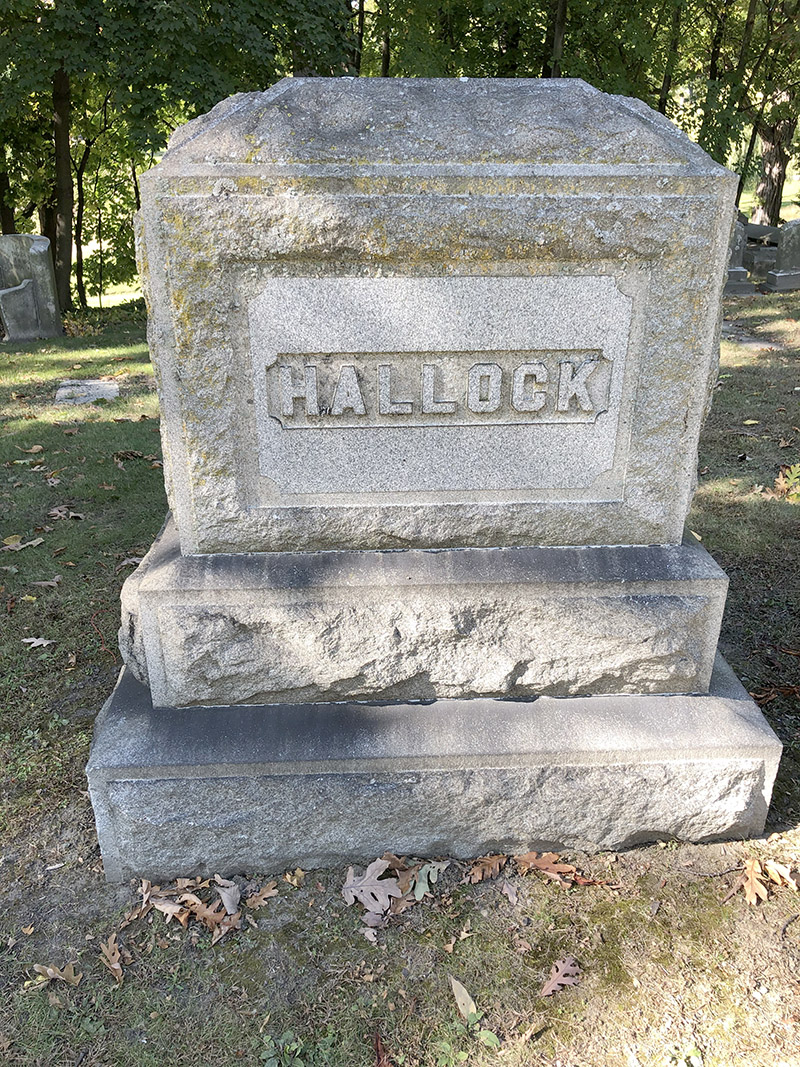Click here to view or download a PDF.
Horace Hallock was born on the east end of Long Island, New York on April 10, 1807. He was orphaned young and educated himself in the common branches as a clerk and then embarked in the clothing business. He came to Detroit in its early days. He was a clothing merchant, in both the wholesale and retail trade and included merchant tailoring trade.
Hallock was a staunch Presbyterian. He was first a member and then ordained an elder in 1833 of the old First Church, located at the corner of Woodward Avenue and Larned Street. In 1854, Jefferson Avenue Presbyterian Church was organized. He served as an elder to this church from its organization to his death. He was superintendent of the Sunday School in the First Church up to its destruction by fire, and filled the same position in the Jefferson Avenue Church for many years afterward.
In politics, Hallock was originally a Whig until the Free Soil movement came into being, and then worked actively for them. He spoke throughout the state in advocacy of its measures. When the Free Soilers faltered, Hallock joined the newly formed Republican party. He strongly opposed slavery and intemperance and devoted his energies to these programs.
Hallock was a prominent man in the anti-slavery movement. He attended county and state meetings. He was a founding member of the Detroit Anti-Slavery Society. He served on committees of the anti-slavery Liberty Party and ran for office on its ticket throughout the 1840s. Hallock was president of the Liberty Party Association which sought to “promote the election of anti-slavery candidates.” This group was responsible for having freedom seeker Henry Bibb speak in Detroit in 1844 and 1845, raising awareness of the dire situation many slaves experienced.
Hallock served as Treasurer of the Refugee Home Society. In 1846, as president of the Michigan Anti-Slavery Society he rallied members saying:
"The great paradox of our age, the existence of the worst form of oppression the world ever saw, in the heart of the freest Republic on earth-must speedily come to an end.”
In 1847 he was nominated and ran for Michigan’s office of Lieutenant Governor as the Liberty Party candidate.
After the passage of the Fugitive Slave Act in 1850, Hallock was one of several men to use his personal wealth to purchase tracts of Canadian land to be leased to freedom seekers.
Hallock and his second wife Elizabeth were quite active in Detroit’s Underground Railroad. They were viewed as trusted agents who helped, fed and housed freedom seekers on their way to Canada.
Hallock died on November 13, 1892 and is buried in Section B, Lot 104. His monument is pictured below.
Hallock is listed in Elmwood’s Underground Railroad Network to Freedom Self-Guided Tour Map.


This material is based upon work assisted by a grant from the Association for the Study of African American Life and History (ASALH), funded by the Department of the Interior, National Park Service. Any opinions, findings, and conclusions or recommendations expressed in the material are those of the author(s) and do not necessarily reflect the views of ASALH or the Department of the Interior. Elmwood Cemetery’s Network to Freedom Application was completed by Carol Mull and Gabrielle Lucci. This biography was completed based upon the Application and records available through Elmwood Cemetery, Detroit Historical Society, Burton Historical Library, Military Records of the United States, Michigan Historical Center, and various information sources.
